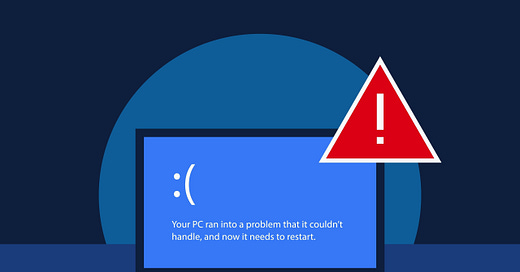What happened last week with the global tech outage?
The Largest IT Outage in History
Last Friday, on July 19, 2024, shortly after midnight in New York, a significant global tech outage occurred due to a faulty update issued by CrowdStrike for its Falcon security software. The update was supposed to provide the latest protection for its customers, delivered automatically via a small file distributed over the web. However, this update was different and exposed a significant flaw in the company's cybersecurity product – one that could have been easily avoided.
The software is commonly used by businesses for important Windows systems, which is why the glitch had an immediate, widespread impact on critical systems. Many computer systems started seeing the “blue screen of death” – an error page that signals a Windows machine is inoperable.
The update caused about 8.5 million Microsoft Windows systems to crash across numerous industries all over the world, including medical record systems, banks, hospitals, emergency systems, governments, retailers, and airlines that were all unable to login to their systems causing major delays and service disruptions.
Airports experienced significant delays and cancellations, with over 5,000 flights affected globally. Major US airports were impacted dramatically leading to long lines and stranded passengers. Software problems also led to hospitals canceling elective surgeries, 911 operators experiencing glitches, and banks unable to provide customer information online.
The global tech outage had a substantial financial impact for the top 500 US companies, with estimated losses at around $5.4 billion, with only a fraction of the losses covered by insurance. This incident highlights the critical role of cybersecurity measures in maintaining the stability of global infrastructure and the potential consequences of software failures.
This outage is a clear reminder of the world's dependence on cloud services. A large portion of our current technology relies on these platforms, demonstrating their power and reach. The incident highlights that even the largest tech companies aren't immune to disruptions and how there is a critical need for strong backup systems and disaster recovery plans to prepare for unexpected issues.





